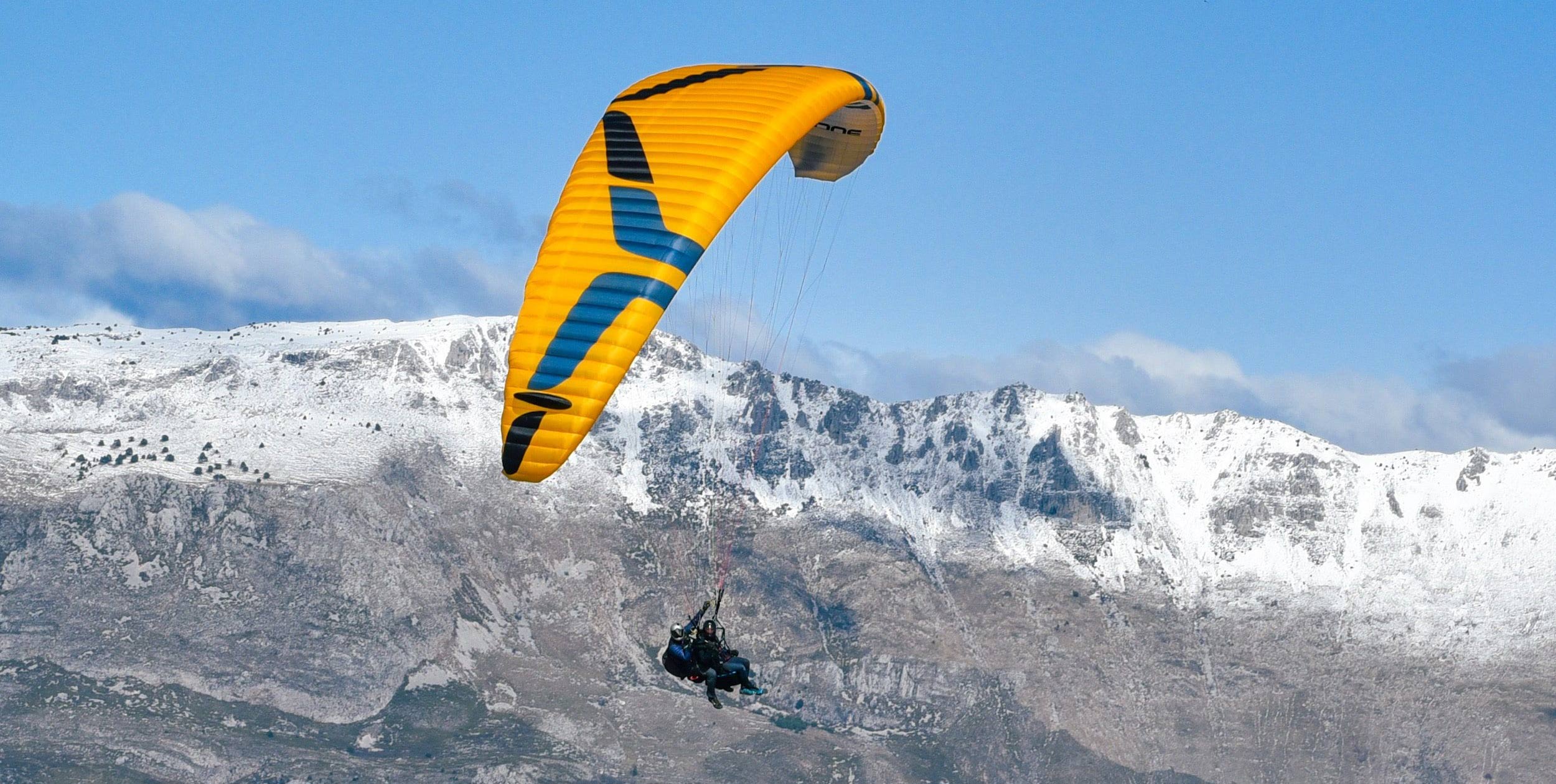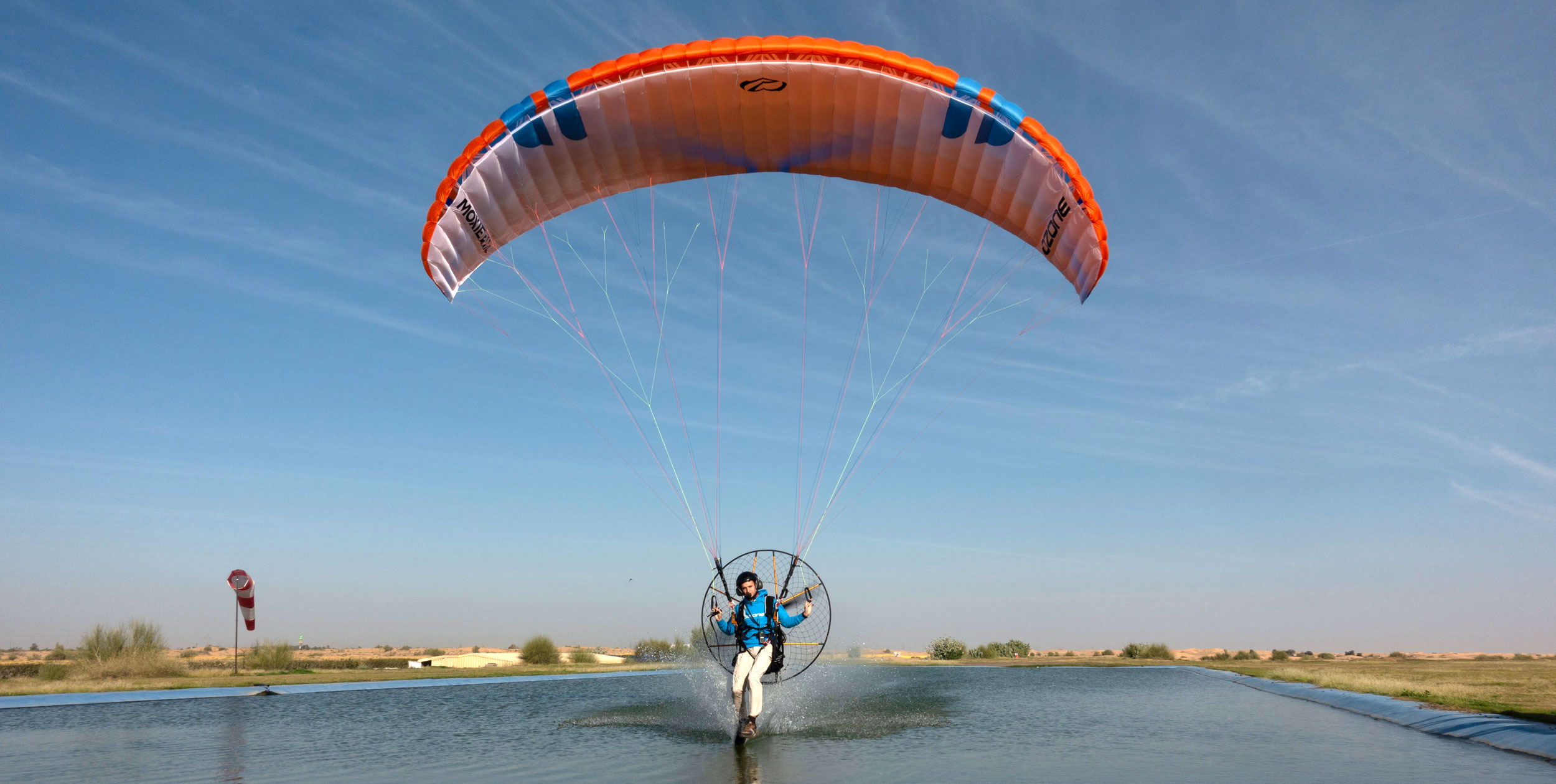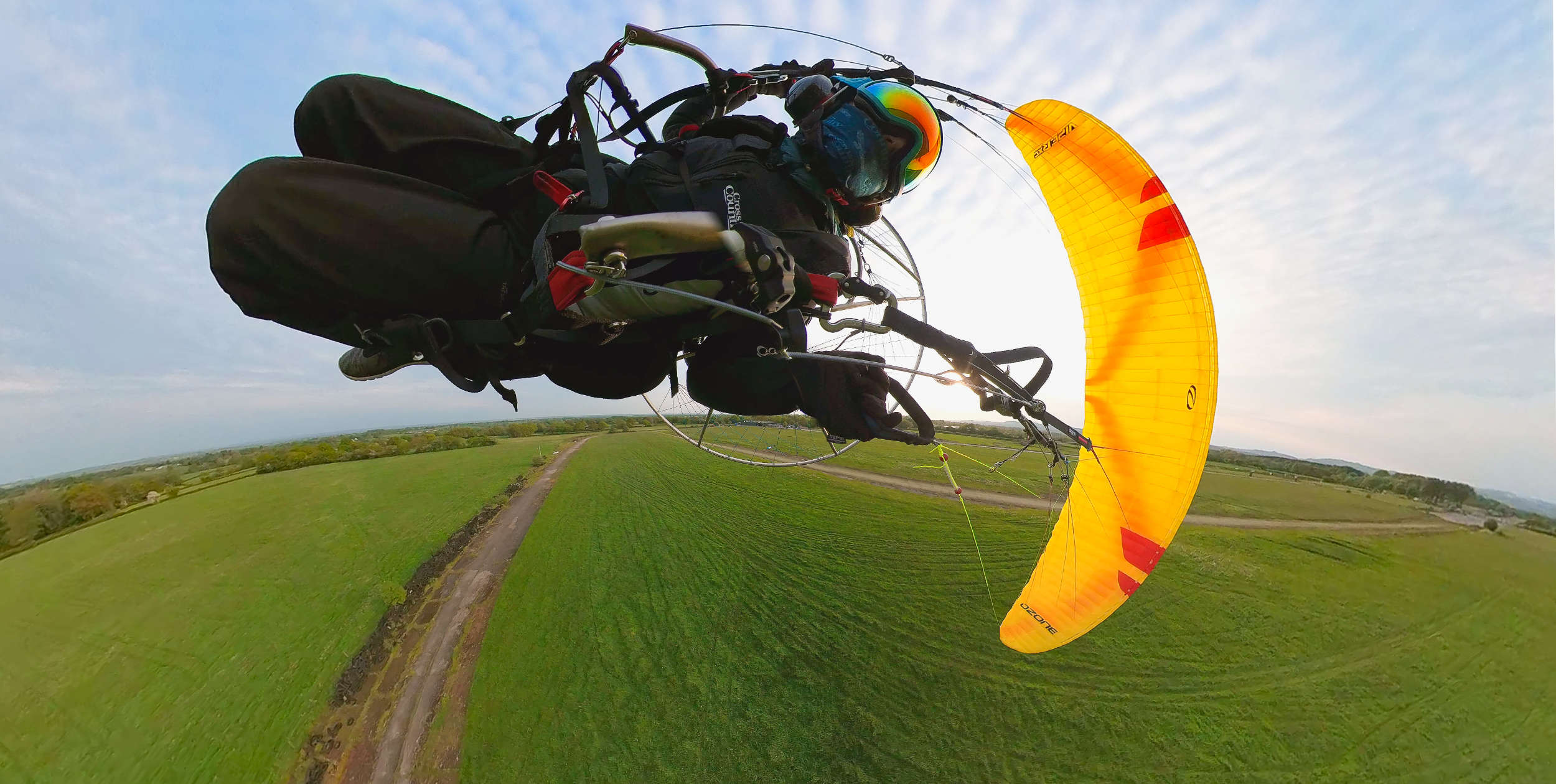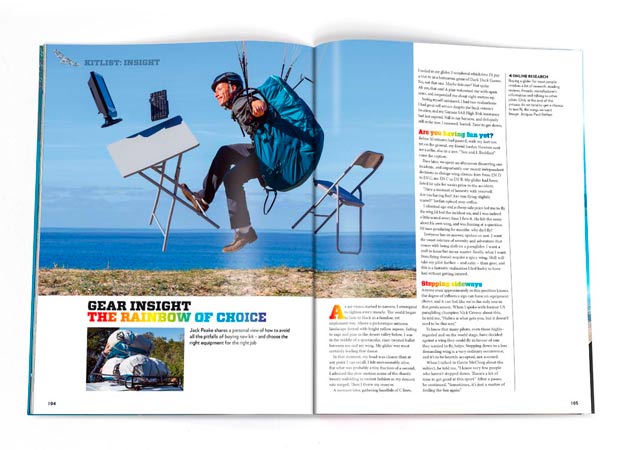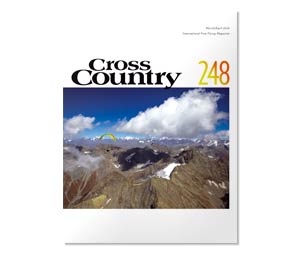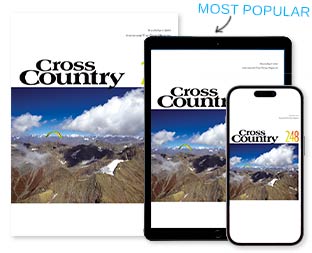Well, they got over their reservations and became quite successful… Ozone’s 2010 promo movie
Ozone’s managing director Mike Cavanagh questions the sanity of the proposed new CEN testing standards. Published in 2002
As some of you may be aware there could be a new safety standard for paragliding testing on the horizon. It has been developed under the auspices of CEN the European Committee for Standardisation and is known by some in the sport as the CEN standard.
The desire for this new standard has come from the associations that are meant to represent our needs in various countries. In the UK this is the BHPA. Being a British company we are obviously quite interested in how we have been “represented”. I am sad to say we have been disappointed.
We are not happy with the CEN standard, as we understand it, as we see the potential shortcomings that might drastically hinder the sport’s development. Considering the time and manpower spent on this new standard and the associations behind it.
You might think this a controversial statement, however it seems that we are not the only manufacturer to see what could be wrong with the new CEN standard and as the arrival draws near we are starting to sweat.
Although the new standard has taken 10 years to create there has been a massive lack of information. Perhaps this whopping amount of time in committee rooms is indicative of the true reason for this standard – politics.
Mainly, the French testing house (ACPUL) does not agree with the German testing house. In the meantime, the pilots have voted with their feet and the majority of the world have recognised that the German DHV have created a pretty good standard. It has worked very well and pilots have based a lot of their purchases on their test results and standards. Manufacturers have tended to agree and thus the DHV standard has become “The Standard”
So what did the politicians come up with that is so bad? Well, here is a broad brush run down of them.
The tests are very objective and so the work involved to test is difficult and almost impossible to measure accurately. The CEN standard requires measurement of the amount the wing dives or pitches during the tests. This means we are going to have to invest in some pretty expensive data recording equipment to gather accurate results because video footage will be deemed inaccurate because it will be subjective.
From what we have been told there is every chance that all our gliders from the Atom (DHV 1) to the Octane (DHV 2) would be sat in the B class. This is the same for most other manufacturers and their ranges.
This is obviously not ideal as we know that these wings have very different characteristics and are suitable for different levels of pilots. To have such a vast difference in the most popular class is very dangerous. At present we have a system that works, everybody understands and, as far as we can remember, has proven to cater for the pilot skill levels in the relevant classes very well.
It would appear that an “A” class wing, according to the tests is going to be a little dull to fly. The recovery characteristics mean that we will almost certainly have to take all the life and spirit out of the wing, something I know Rob and Dav despise doing as that is the essence of flying. The idea is that anybody can fly this wing but did they stop to think that we don’t want just anybody in the sky, as it’s dangerous for everybody?
As far as we can see, if the CEN standard goes through and becomes the norm, then our costs are going to rise in order to prepare a glider for certification. Up to twice as long to prepare for the tests. On top of that the actual CEN test costs are going to rise (nearly double) due to extra time it will take the test houses to test. All this means that the cost of a glider to the pilots will rise and no doubt our margin will suffer too.
Another of the aims was so that other independent test houses could easily do the tests so that we are not so reliant on the current test houses. Very noble, but is our sport really that big? Less jobs per testing house, means more cost per job!
We are happy that the DHV tests are safe and represent a level of safety acceptable to what is a risky sport and always will be.
The other problem from our point of view has been the lack of information about the finished standard. Information on the standard has been very scarce and when it does come it is out of date due to a new proposal that has been submitted or disagreed on.
We have been given no tested examples of the classes. We would be especially interested in seeing a class A glider! The recent drafts we do have have given rise to the above thoughts. But we are still not sure they are the final draft that goes to vote.
As far as we are aware the BHPA representation has been by Angus Pinkerton and Mark Dale, neither strikes us as current paraglider pilots, let alone experts on present testing standards. These guys were acting as the advisors to the people in Britain who vote on this (the BSI). We find this quite disturbing.
When I asked Mark why he had not been in contact with Ozone, who do know something about testing, his answer was that they did not think there were any British paraglider manufacturers to consult with! We might spend a lot of time in France (if only Britain was sunnier for testing) but we are UK registered company and predominantly British people. I can also think of another British designer but no doubt they forgot him as well.
Now, sometimes I am not sure what the aims of the BHPA are, but I am sure its members were not expecting this sort of thing.
To us, the 10 years have been amazingly wasted, at who knows what cost to the associations (all those meeting over 10 years), with a final result that really could be detrimental to our sport.
The BHPA have not, and as far as I know, no other association have said the current tests produce dangerous gliders. In fact I think the BHPA insurance is only valid for gliders certified with the current bodies. There is the saying that if it is not broken why fix it! We agree.
We are happy that the DHV tests are safe and represent a level of safety acceptable to what is a risky sport and always will be.
If the BHPA is acting as an advisor we wish they would advise voting against the current proposal, but as I think Angus Pinkerton was the chairman of the working party that drew up the standard there is little chance of this happening.
It would have been a lot better idea if the BHPA had done what is best for the pilots, ignored the politics and accepted the fact that the DHV standard is presently very good and worked with them to improve it if necessary.
Knowing our thoughts were not agreeable in certain more political bodies we thought they would be ideal for publication on the Attitude page in Skywings, the official magazine of the BHPA. Unfortunately after initial encouragement from the editor other people apparently decided our thoughts should not be broadcast.
It would damage the credibility of the new standard and not give it a chance. We do not agree and therefore we have decided to air our thoughts on our web page and send a letter, which we hope, will be published.
I do not aim to rock the boat but I will not let it pass silently if I think it is harmful to the sport we are passionate about.
Mike Cavanagh
Updated January 2011
• Got news? Send it to us at news@xccontent.local
Subscribe to the world’s favourite hang gliding and paragliding magazine

